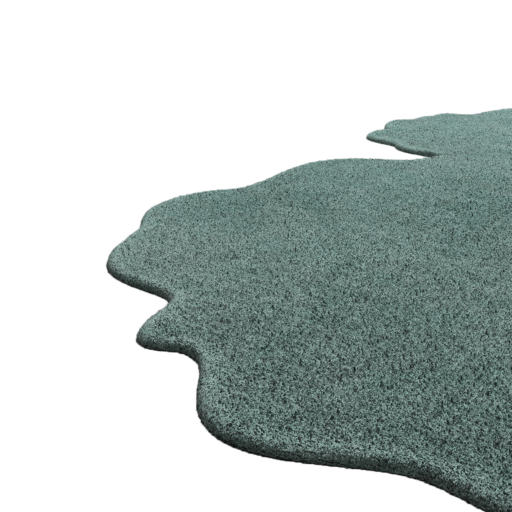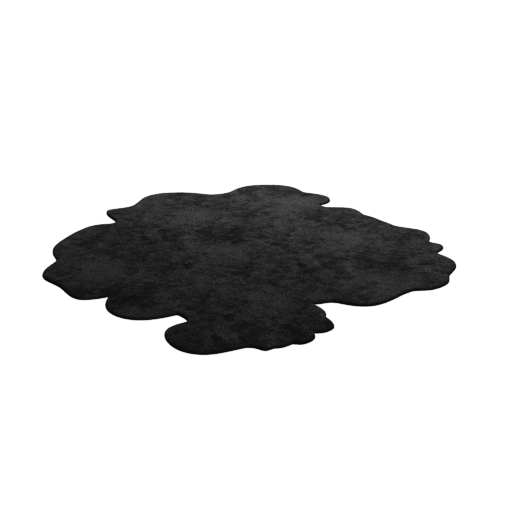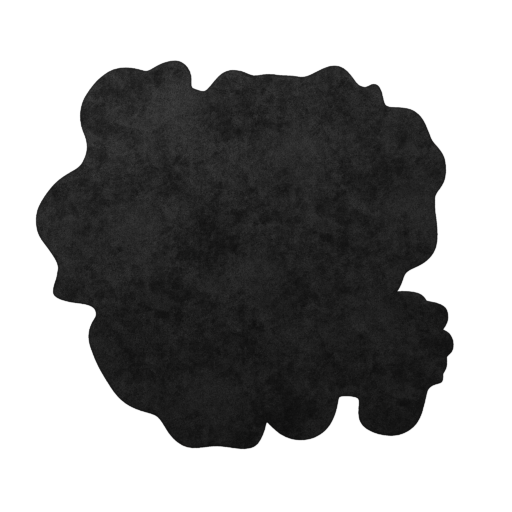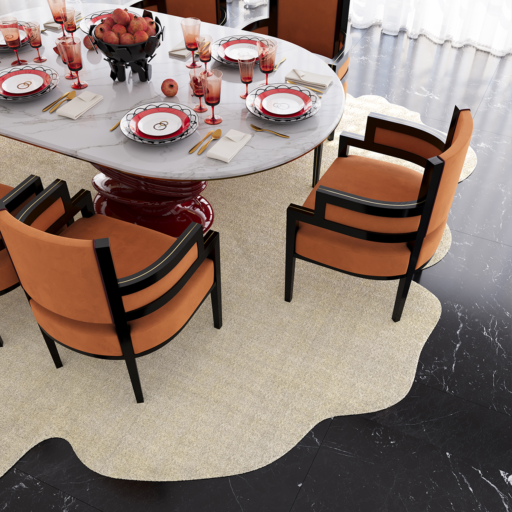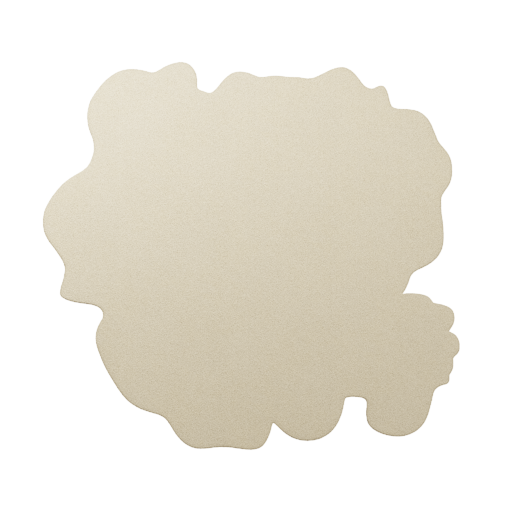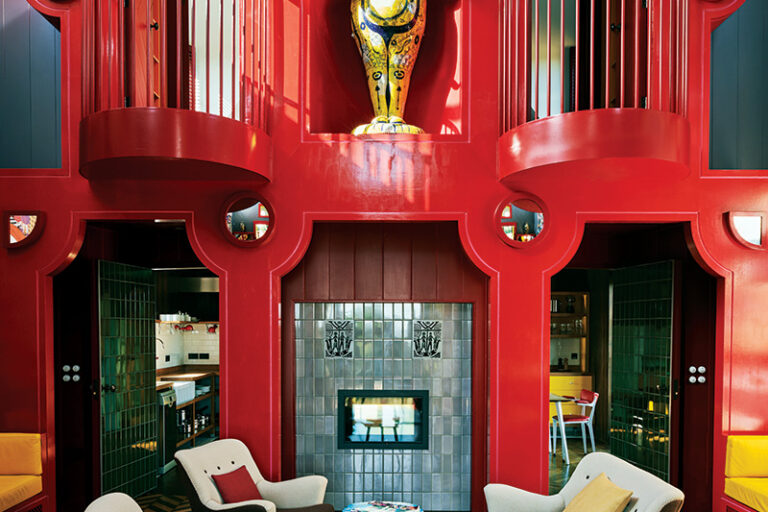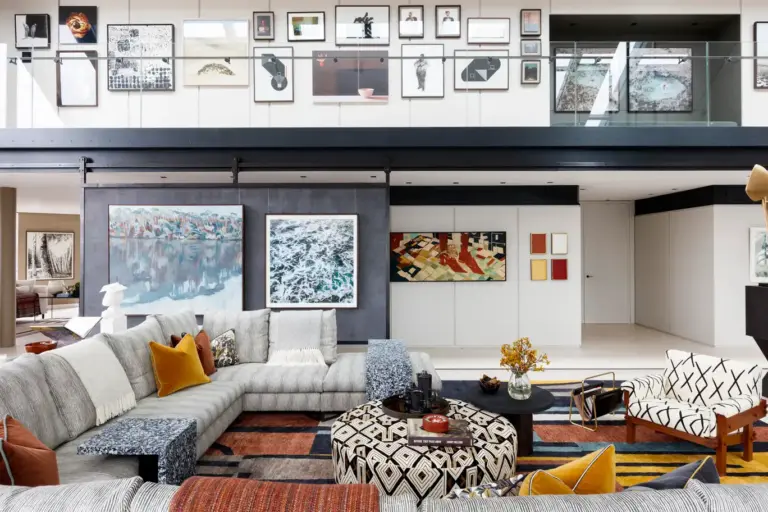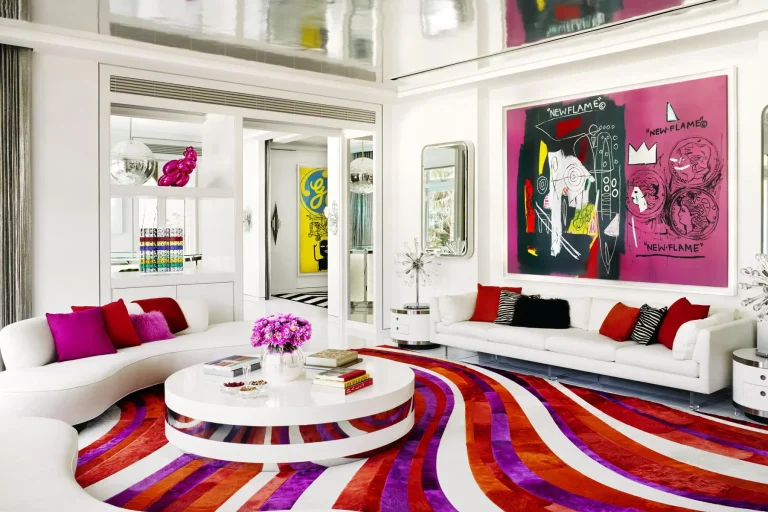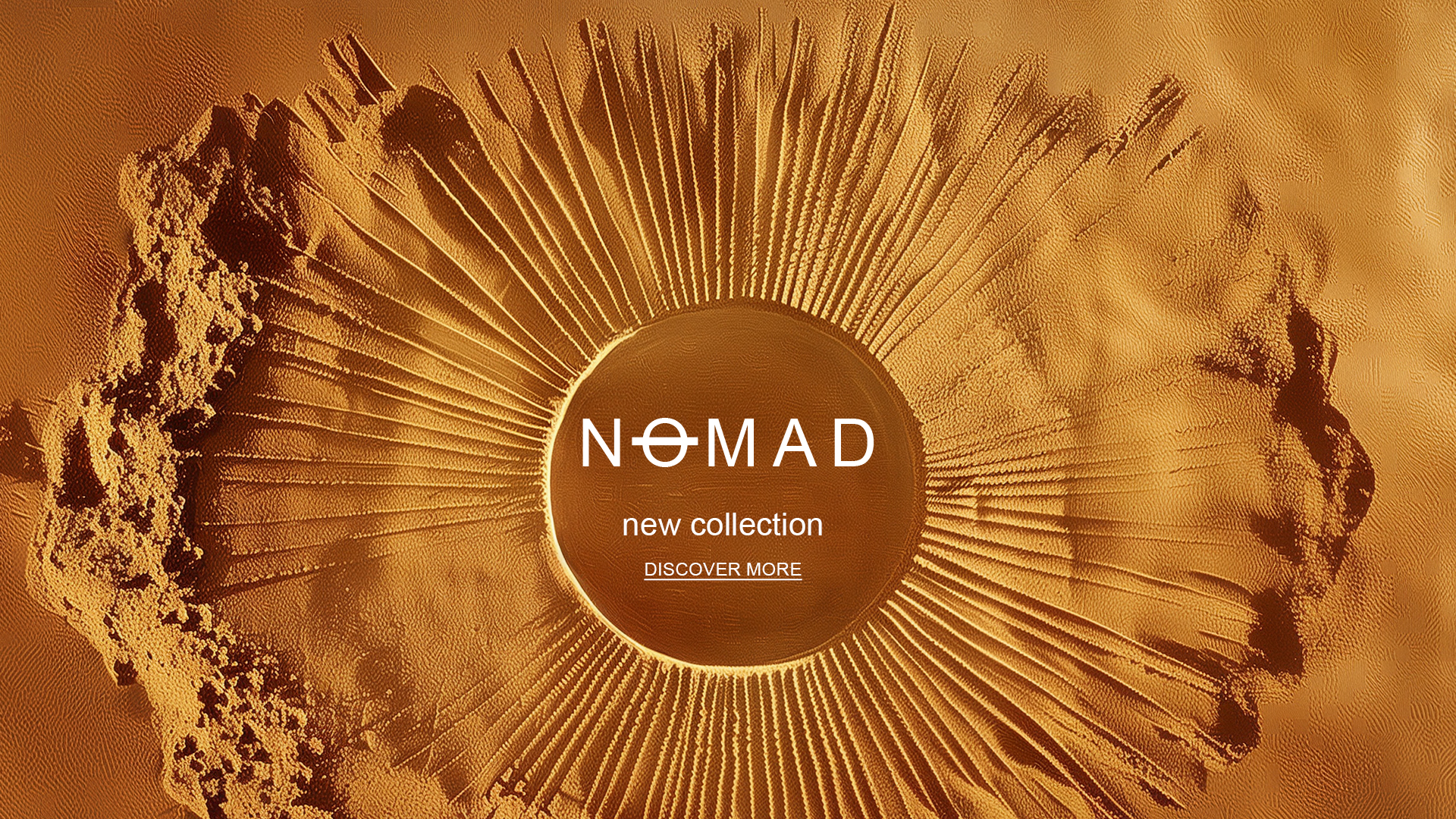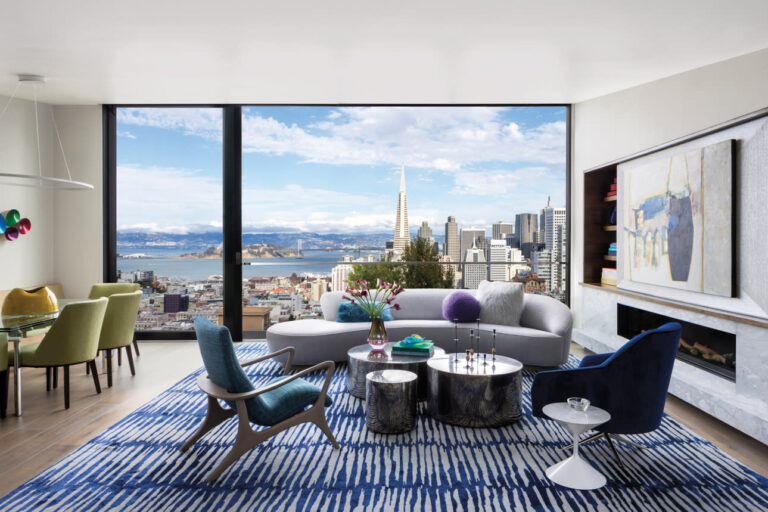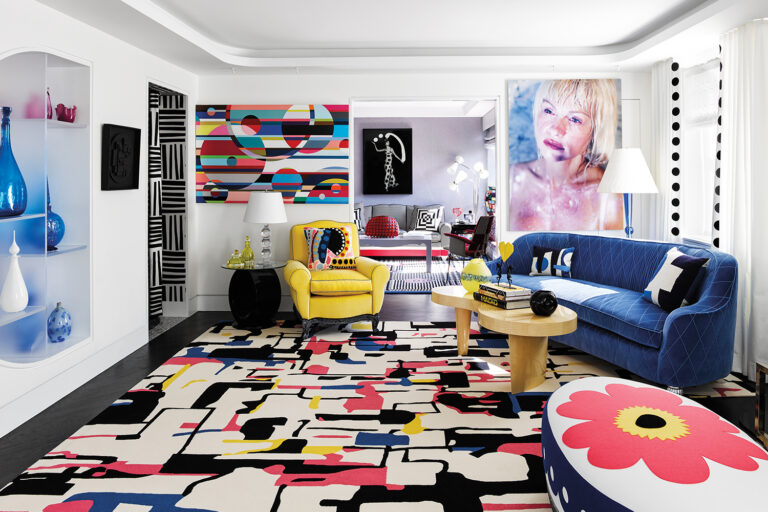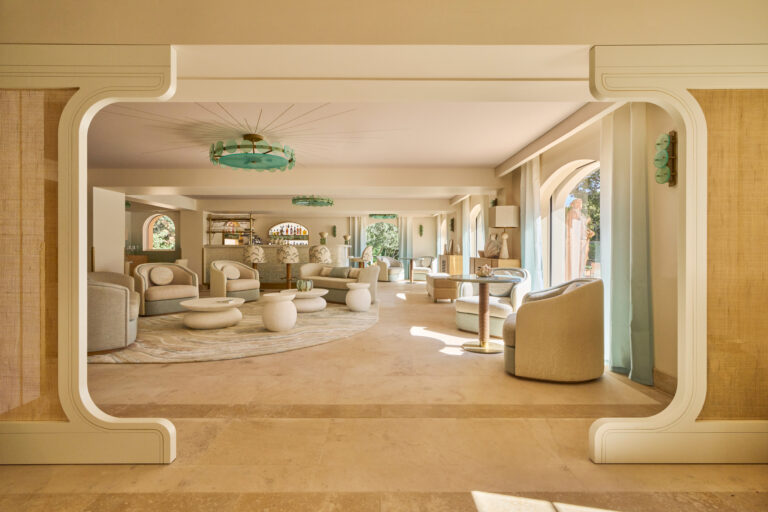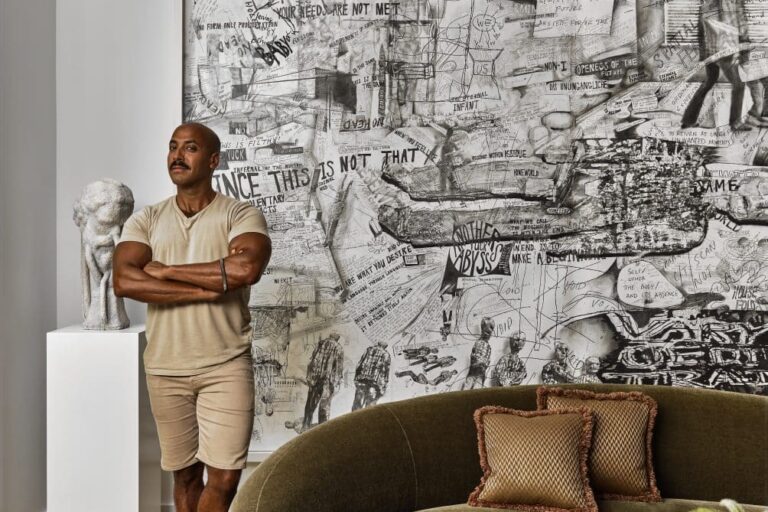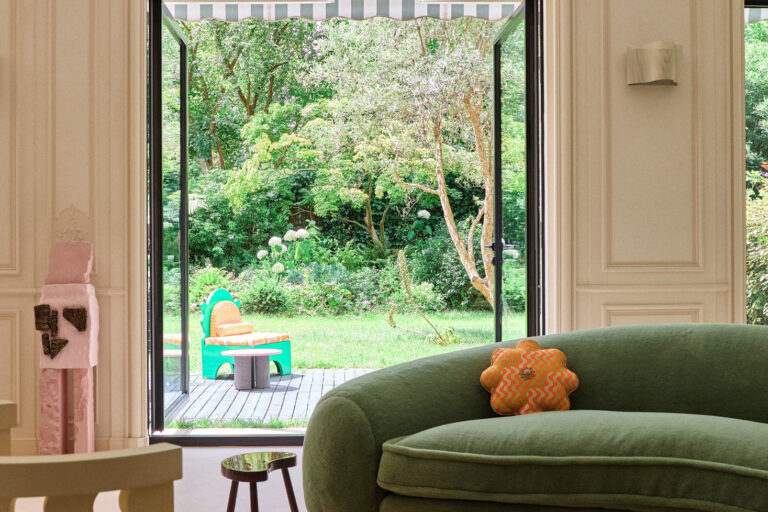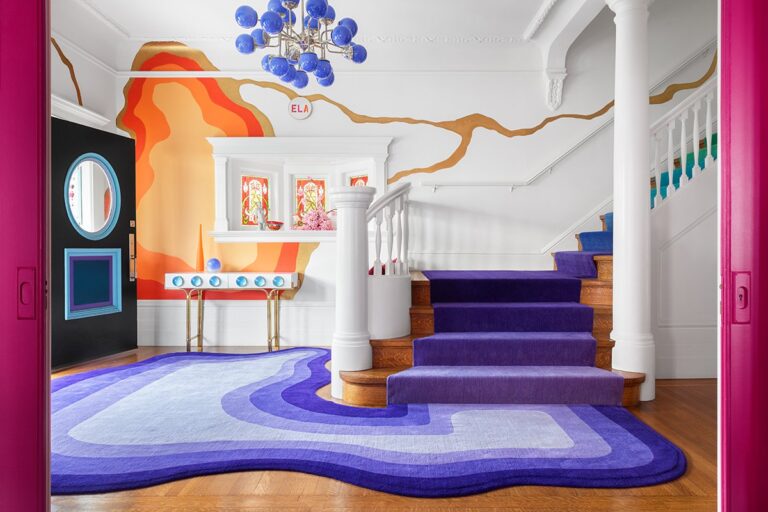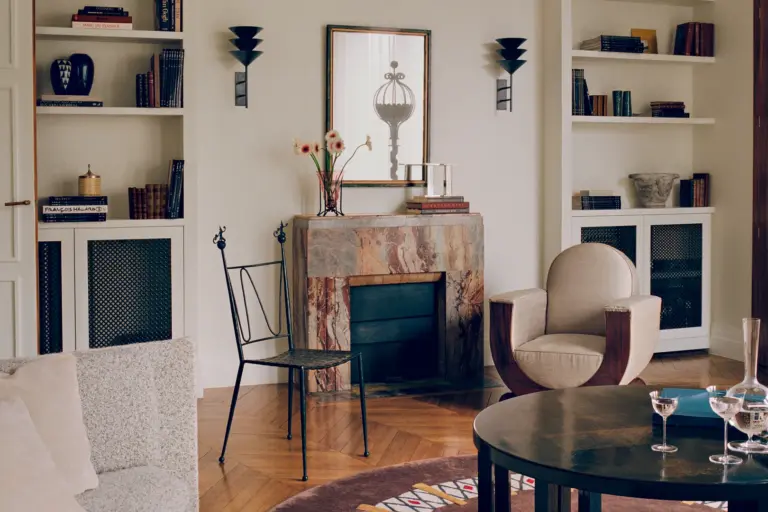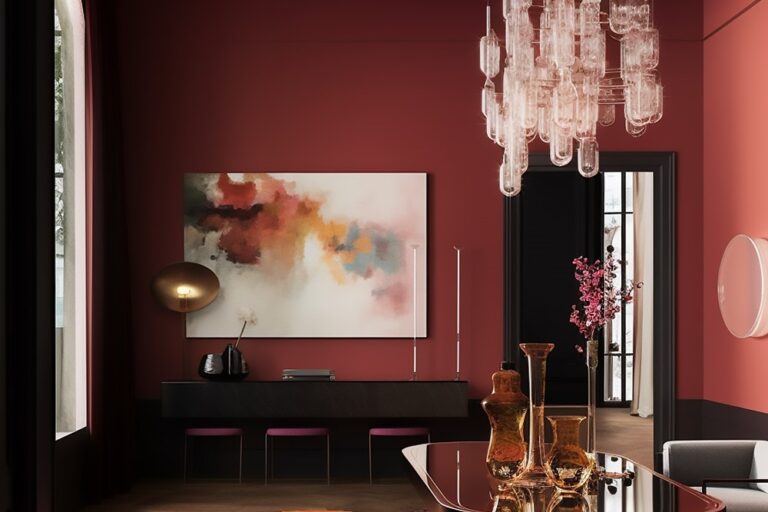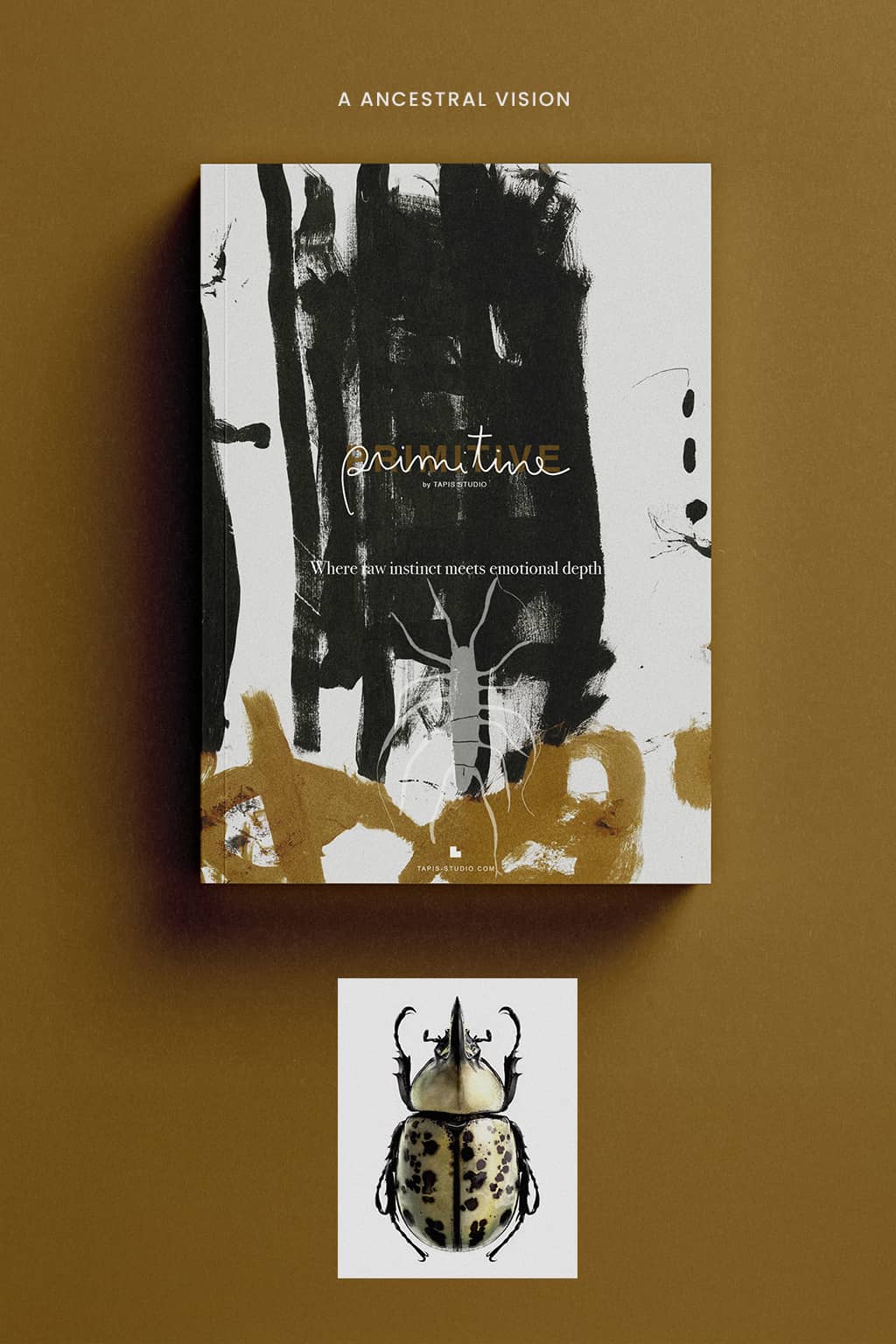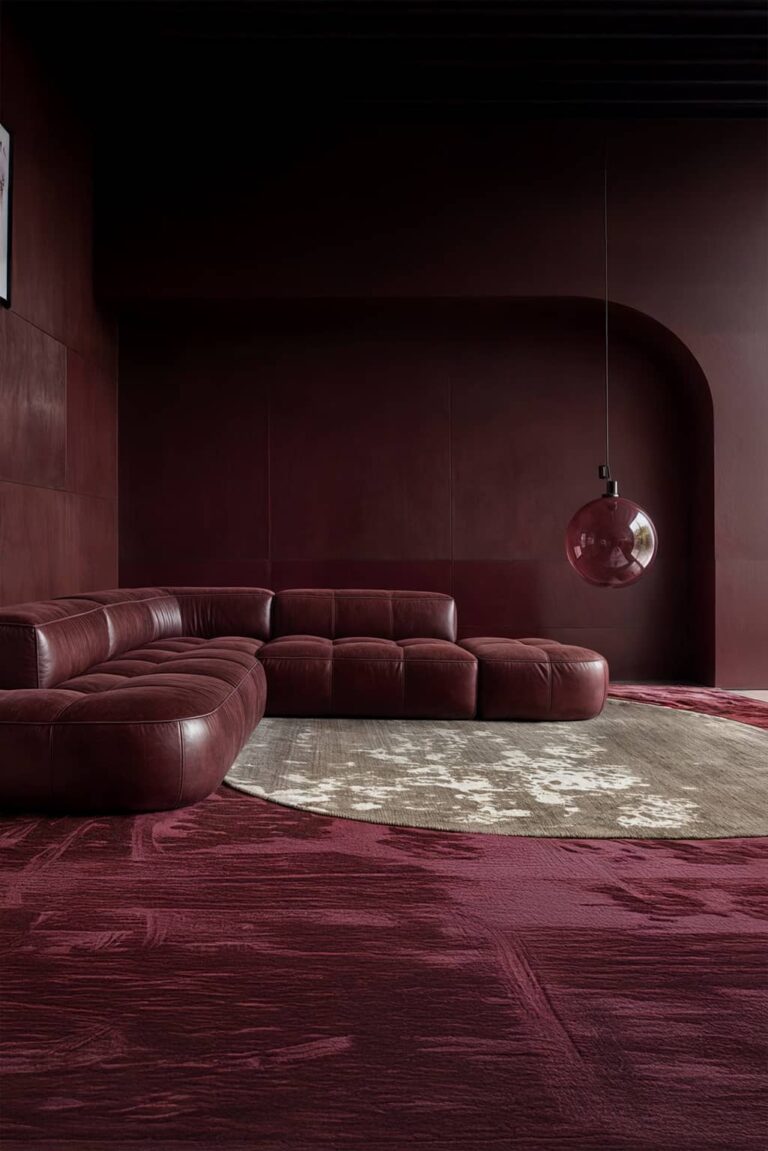Discover how modern area rugs enhance artistic interiors in this San Francisco townhouse by Kendall Wilkinson, blending color, texture, and sophistication.
In high-end interior design, modern area rugs do more than cover floors—they act as spatial anchors, artistic layers, and storytellers. No longer sidelined as practical afterthoughts, they’re foundational design elements. In the remodel of a San Francisco townhouse by Kendall Wilkinson, modern area rugs join architecture and art to create a seamless, luxurious environment.
Blending structure, beauty, and depth, modern area rugs contribute to interiors shaped by thoughtful artistry and sophisticated aesthetics.
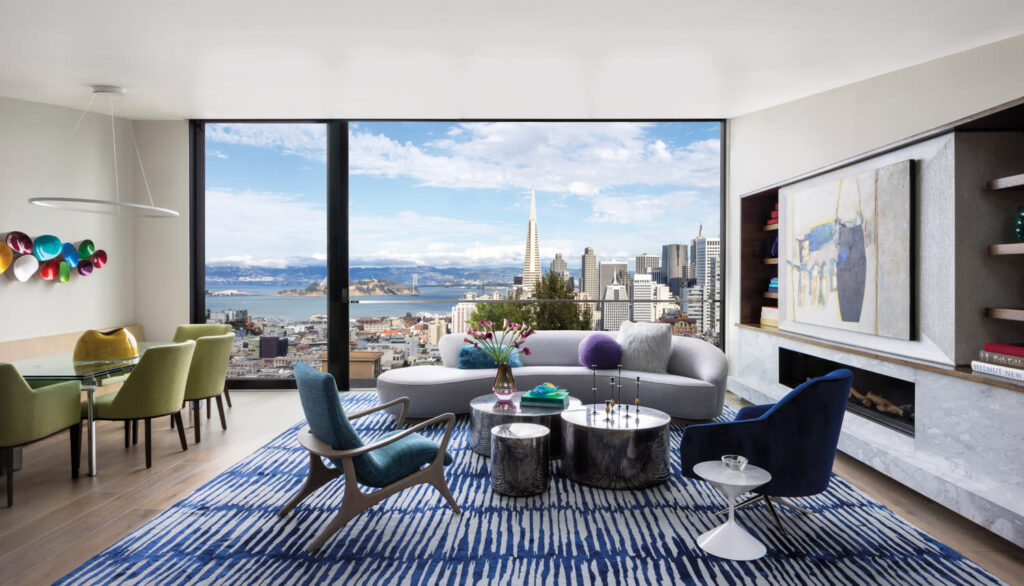
A Canvas First: The Upside-Down Layout
One of the first unique features of this San Francisco home is its inverted layout. The top floor, housing living, dining, and kitchen areas, capitalizes on panoramic views of the Bay Bridge, Alcatraz, and the skyline. In such an open, flowing space, rugs provide zoning without walls.
A modern area rug under the seating ensemble subtly defines the living zone. Another beneath the dining table frames that area, establishing visual boundaries while preserving the spatial fluidity.
Visual Rhythm Inspired by Art
Throughout the main floor, a linear mixed‑media installation by Willi Siber sets the tone—its bright palette and rounded shapes inspire the entire design scheme.
Modern area rugs echo this aesthetic: vibrant but structured, they bring the same dynamic energy to the floor. Think bold brushstroke patterns or geometric shapes in blues, purples, greens, and yellows—colors that correspond with the art and furnishings without overwhelming the scene.
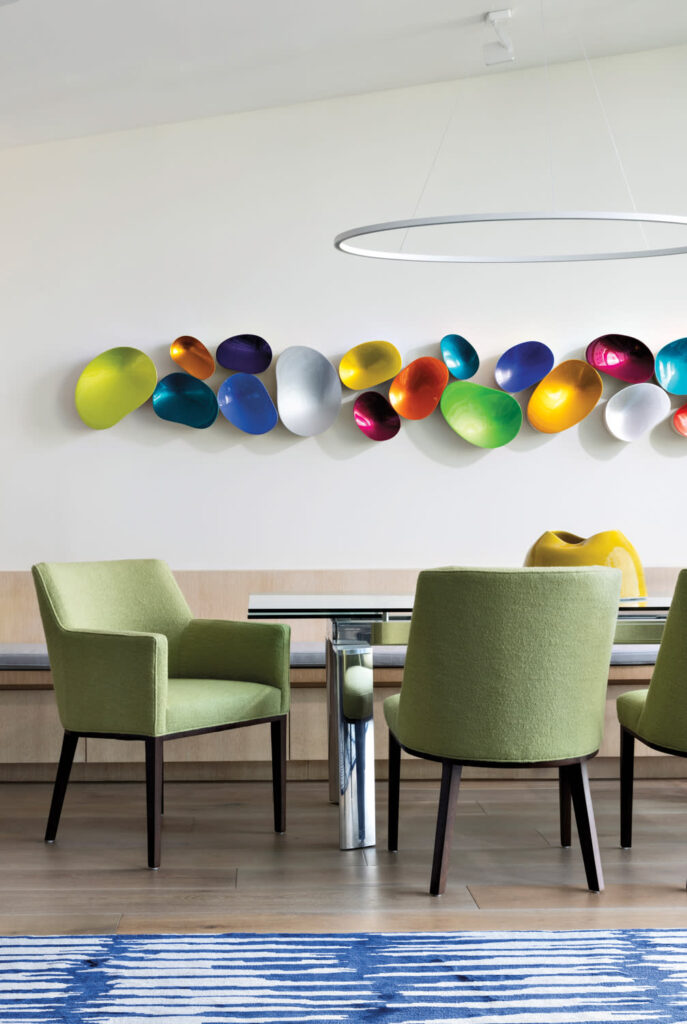
Texture Brighes Art and Architecture
This townhouse merges sleek architectural lines—with a ribbon staircase and polished stairwell—with plush textiles and soft furnishings. Modern Art Rugs act as tactile mediators: they soften hard materials and introduce a sensorial element.
For example, a velvet or wool rug underfoot provides contrast to metal stair balustrades and marble countertops. It makes the space feel lived-in and welcoming—even amid grand architecture and sculptural lighting.
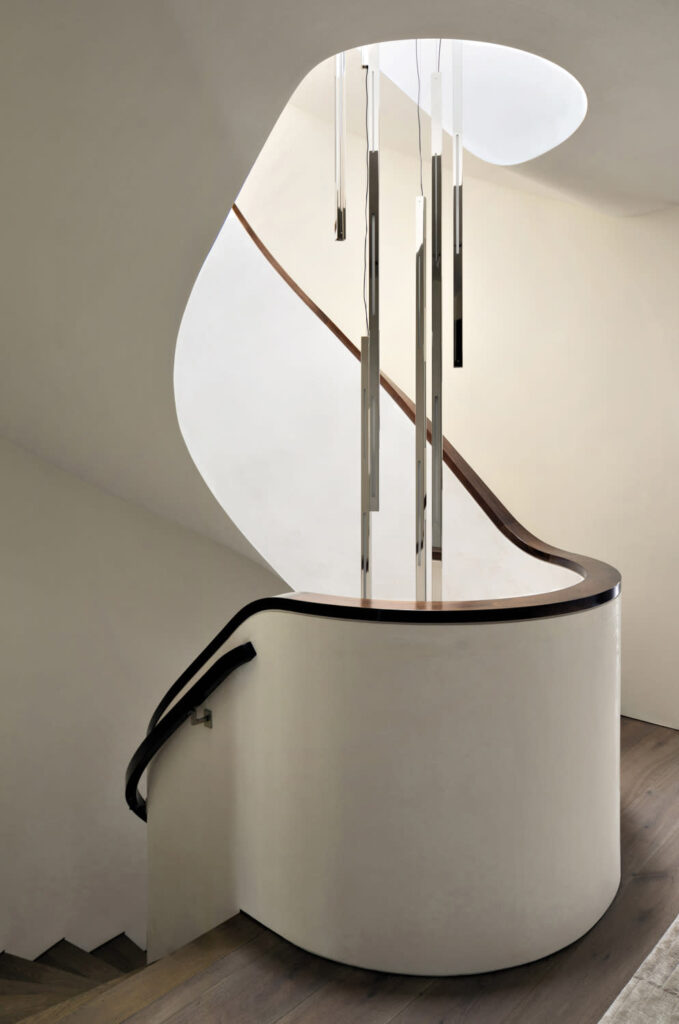
Color as Emotional Underlayer
Kendall Wilkinson’s design relies on a neutral canvas accentuated by saturated tones—deep blues, vibrant greens, and moody purples—to avoid anticipating the view without competing with it . Modern area rugs follow that principle: subdued enough to soothe, yet bold enough to speak.
Rug palettes in this interior might be gradient, ombré, or tone-on-tone. They bring the necessary color depth while allowing furniture and artwork to shine. In the bedroom, shades echoing treetop views create serenity underfoot.
Balancing Scale and Placement
Getting rug scale right is vital. Too small and the room feels disjointed; too large and the effect is overpowering. In the townhouse:
- The living area rug extends slightly beyond the sofa and chairs, defining the gathering space.
- In the bedroom, one rug is placed under the bed to warm the floor around it.
- Near the entry, a runner visually connects dark-hued entry with the spiral stair.
Smart placement ensures visual balance and reinforces purposeful room boundaries.
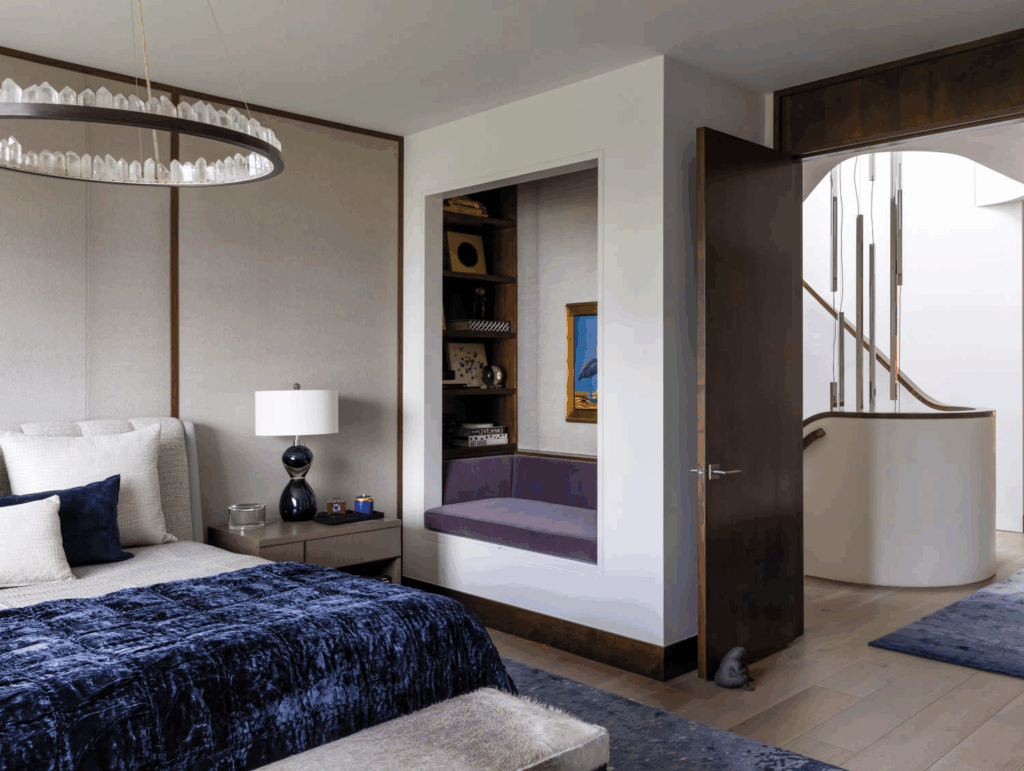
Art You Can Walk On
In this interior, modern area rugs function as tactile artworks—subtly luxurious, quietly expressive, and crafted with intention. Like the curated furniture and sculptural lighting, they reflect an artful sensibility, blending soft textures, refined materials, and nuanced patterns that enrich the space without overwhelming it.
Each step reveals a shift in color or weave, offering a daily dialogue between design and experience. It’s quiet luxury, felt from the ground up.
Customization for Personal Expressio
The homeowners visited workrooms to understand craftsmanship—and they welcomed personalized. In that spirit, custom modern area rugs can be made to measure—in size, palette, pattern, or texture—echoing wallpapers, art details, or architectural curves.
Whether round for a discussion nook, rectangular oversized for open plan flow, or layered for textural complexity, customization makes rugs feel integral to the space.
Creating Depth Through Layering in Interior Design
Layering is a refined design strategy that brings depth and character to any space. It begins with a clean, neutral foundation—think soft tones, natural materials, or minimalist finishes—and is elevated by carefully chosen accents that introduce contrast and personality.
In this kitchen, for example, this might mean pairing understated cabinetry with bold pendant lighting, textured backsplashes, or sculptural stools. These layered elements define subtle zones and enrich the ambiance, making the space feel curated, inviting, and effortlessly sophisticated.
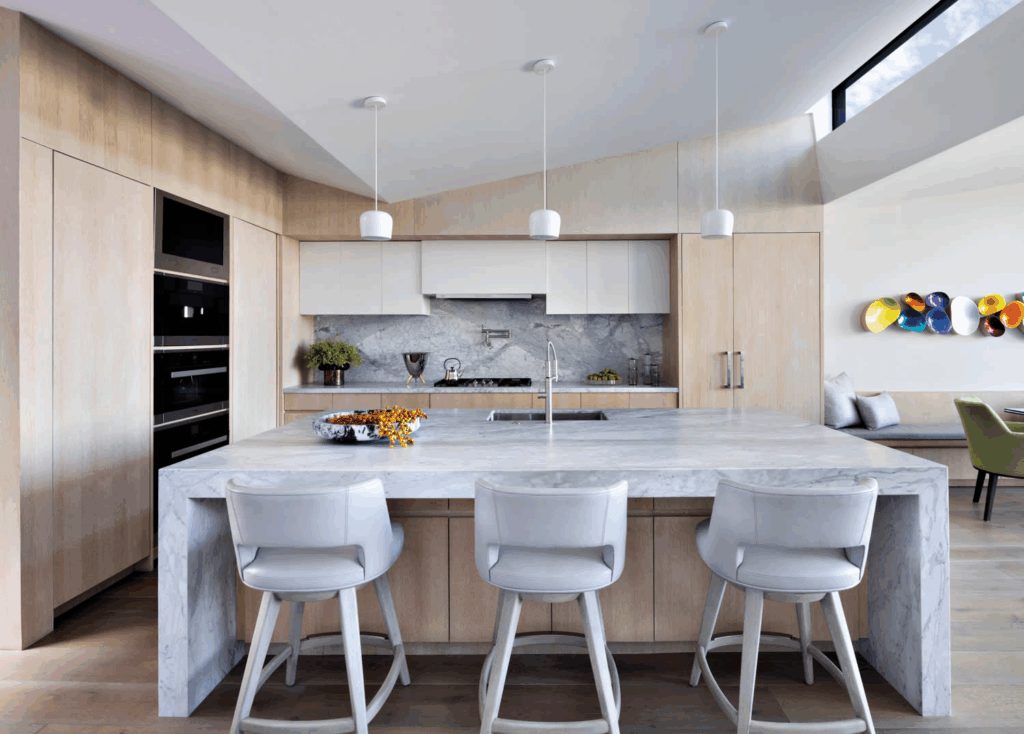
Designing with Intention
In this interior, every rug is placed with purpose—carefully chosen to enhance both function and atmosphere. This level of consideration is what defines truly luxurious spaces: nothing is random, everything supports the overall vision.
To apply this mindset in your own home:
- Use rugs to subtly define different zones in open-plan layouts.
- Let architectural features and natural views guide your palette.
- Prioritize craftsmanship—seek out makers who value quality and detail.
- Select rugs that act as both grounding elements and artistic expressions.
Elevating Design from the Ground Up
Modern area rugs are not just accessories—they’re integral design components. In Kendall Wilkinson’s San Francisco townhouse, they bridge architecture and art, grounding the space while enriching the visual narrative. These pieces create rhythm, softness, and connection—transforming interiors into immersive, lived-in environments.
Ready to elevate your space?
Start with a rug that tells your story—crafted with care, chosen with intention, and designed to last. Explore our curated collection to find the piece that defines your foundation.
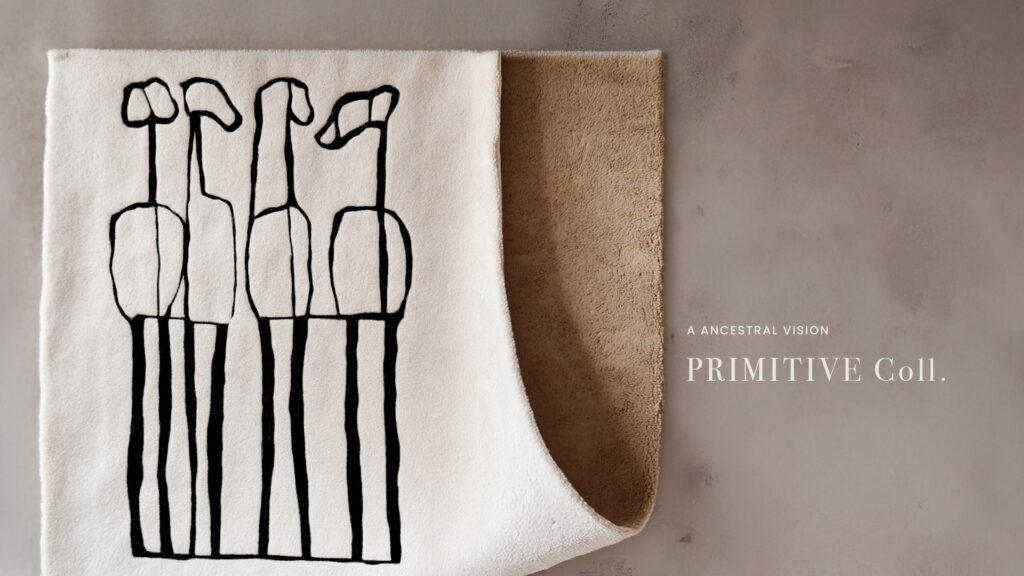
Source: LUXE
